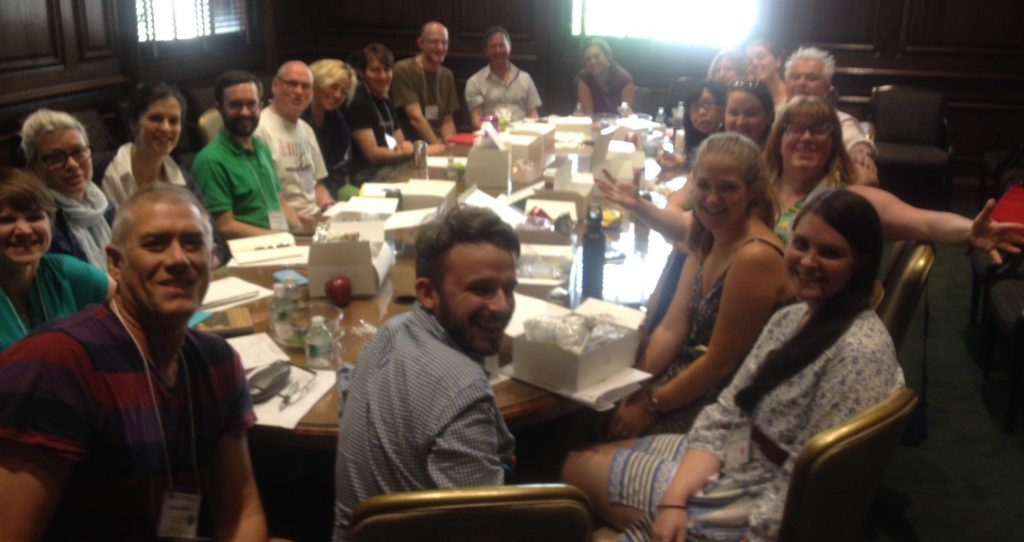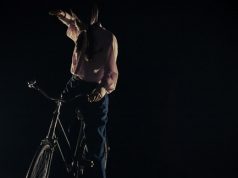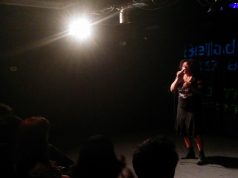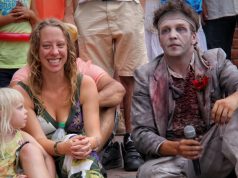
Who are the people in a performance process who have the ability to interpret and communicate while thinking on their feet? Who has a role in the creative process that is malleable enough to incorporate new practices and technologies? Who can write a blog post in an hour and distill a 3-minute-long comment into 140 characters?
Dramaturgs.
This facility for incorporating new skills was confirmed for me last week when with three other members of the SpiderWebShow team and I attended #LMDA15 at Columbia University in NYC. That what we are doing at SpiderWebShow is in many ways dramaturgical has been a slow realization for me. That the internet and its tools, the social design of a project, would in many cases best be integrated with a creative process by dramaturgs, is actually quite natural though.
As someone who identifies primarily as a director in my creative capacity in the theatre, I wondered before I left if I would feel a little left out at the conference. I imagined myself on the margins, listening in on the various conversations that are revived annually.
What I found instead was an atmosphere that was heavily integrated with social media and gave multiple opportunities for social engagement. Many of the panels were livecast by Howlround, #LMDA15 generated 3000+ tweets over the event, and some of the panels also took questions from the internet.
We’re talking #TedTalk levels of social integration when dramaturgs from across North America get together.
This is not to say that we have figured out how to do it all properly. At a basic level what this achieved was to push the conversation to new audiences by rebroadcasting the words of panelists through new platforms – a useful, if not entirely creative endeavour.
Where I found the online most useful was when the tweets that accompanied a panel began a second parallel conversation. Sometimes this would be tangential, a point raised that sends the socially-active audience in a different direction than the discussion. Most interesting to me was when the livetweets would become similar to Chekhovian subtext, a space where an even more honest collection of thoughts on a topic would coalesce around the outward exterior performed by the panelists.
This development had me wondering about the social design that could be at further conferences if it moved away from the strictly panel-based format that defined this edition. If it was a single presentation on a concept or topic, how would that effect the online discussion – could it develop more substance? If there was a debate format to a discussion – would that play out as a parallel debate in the Twittersphere?
Also of note was the consensus around Twitter as a useful way for dramaturgs to maintain a consciousness of the ideas and productions occurring nationally and internationally. As a professional tool, it offers increasing opportunities for engagement with colleagues as well as the ‘global dramaturgical discussion’ on hot topics. There is an increasing immediacy to the network of intellectuals who write and think about theatre regardless of whether they identify as a dramaturg, and this seems to be how to take part in it.
Below is a Storified collection of tweets and pics mostly from Day 3 of the conference that give a sense of what was going on. With more than 1000+ tweets to choose from that day, curating elements of various discussions that were broadly about curation was its own meta-experience. Every tweet un-storified became a story untold, every author curated multiple times became a privileged voice.
Sorting through 3000+ raw tweets from an event is unmanageable for an audience however, indicating that the dramaturgy of twitter dramaturgy may also be an emerging field.









